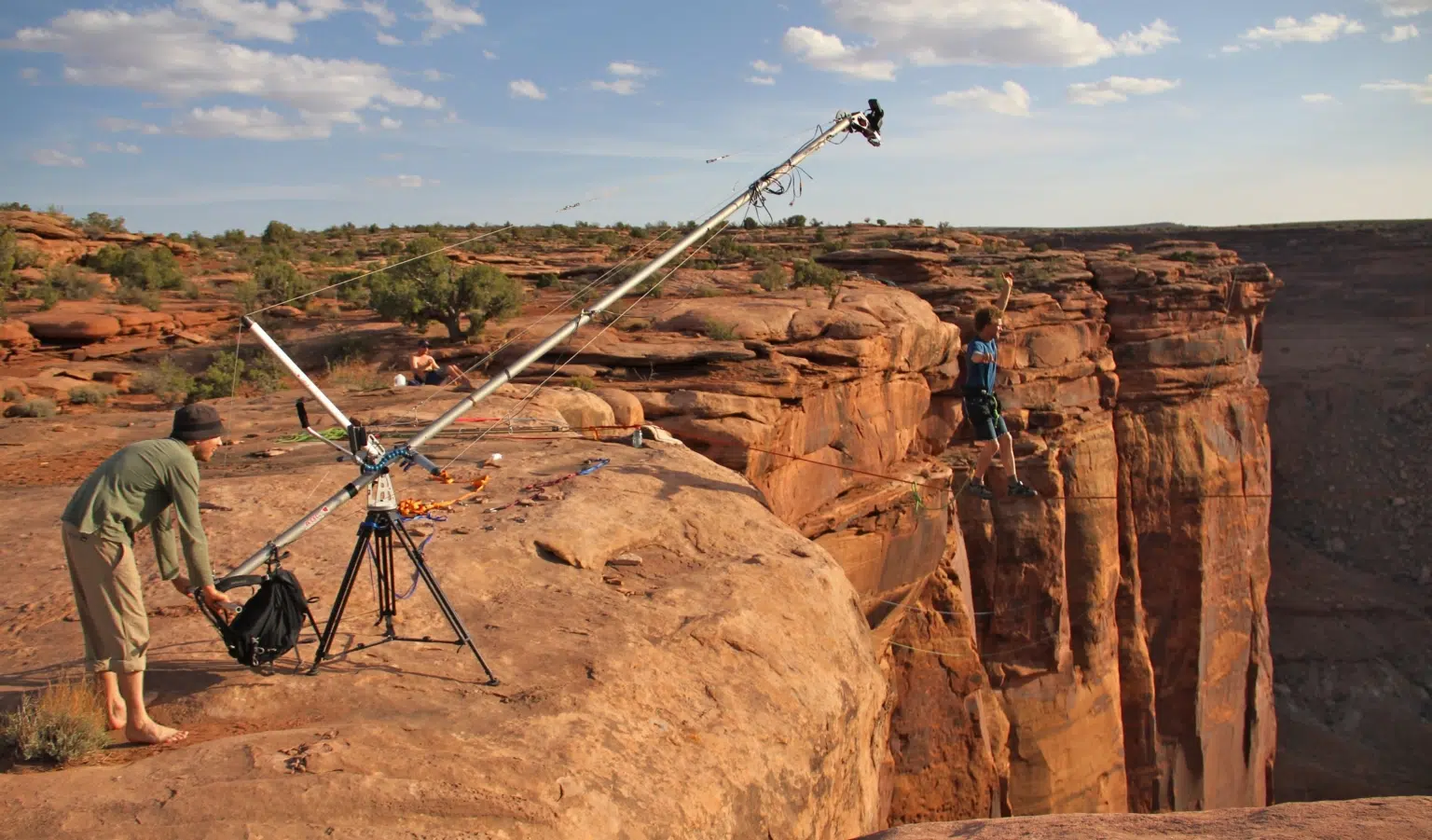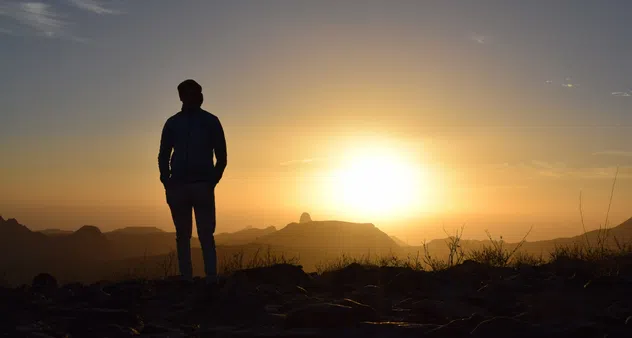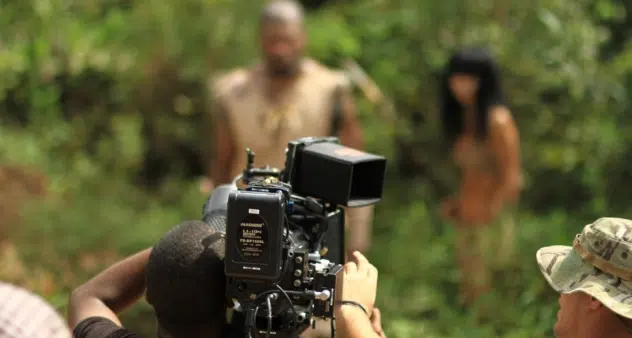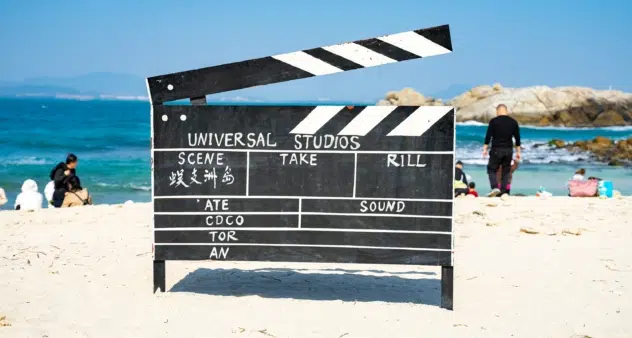The production & direction questionnaire
You’re a producer or director looking to highlight stories that incorporate characteristics of a more inclusive and sustainable society while anticipating the consequences of these choices on your media’s production.
This guide includes three questioning themes based on the cornerstones of the stories you produce/direct: the characters, the societal model and the characters’ mission. The full guide includes approximately fifty questions and is available for download. Its quick, easy-to-use format invites you to think about the substance and form of your story
without hindering your creativity, and without any right
or wrong answers.
It also allows you to amplify the power of your work through sustainable film production and the film’s impact campaign. You will find a summary of the guide on this page. This questionnaire is not an exhaustive list. Feel free to make it your own and use it to guide you in your goals and needs.

Who are your characters?

Parity, inclusion, disability, and cultural, ethnic, and social diversity… Our history and societies are the product of a profound diversity that contributes to their strength and value.
The goal of this chapter is to reflect upon how your main and secondary characters are established and whether they reflect our social diversity. Without imposing quotas, this section allows you to explore the diversity of your characters and how it impacts your story.
They also allow you to anticipate and adapt your casting calls.
A few key figures
3.57%
of on-screen interactions involving three characters are between 3 women, compared with 40.74% between three men.
Using data science to understand the film industry’s gender gap, 2020
38.9%
of lead actors in theatrical and streaming Hollywood films produced in 2021 are people of color.
UCLA, 2022
2.8%
of the characters in prime-time TV series in the US in 2021 have a disability, whereas disabled people represent 26% of the American population.
GLAAD, 2022
47.2%
of lead actors in films released in 2021 are women.
UCLA, 2021

What is your character’s mission?

The concept of “success” includes many facets that go beyond those conveyed by the current dominant models (financial gain, the appeal of power, etc.).
This part of the guide offers ways to explore and highlight new sources of personal and collective fulfilment and development by reflecting upon characters’ aspirations and their understanding of current issues.
These questions give an opportunity to explore the spirit of contradiction in human beings through the lens of contemporary reflections, and to create complex characters far from being smooth or predictable.
A few key figures
64%
of the world’s population considers climate change to be an emergency.
UNDP & Oxford university, 2021
77%
of survey respondents report having learned about a social or environmental issue through fictional TV or film.
A Glaring Absence, 2021
0.6%
of the 37,453 film and TV scripts analyzed by researchers at the University of Southern California specifically mentioned “climate change”.
A Glaring Absence, 2021
3
films nominated for the 2024 Oscars are set in a society where climate change is present.
Climate Reality Check, 2024

Which societal model serves as a backdrop for your story?

Our consumption of natural resources exceeds what the Earth is able to replenish in a year. According to Earth Overshoot Day, it would take 1.75 Earths to regenerate what we consume.
Because humanity will have to adapt to these fixed planetary limits, the goal of this chapter is to reflect upon your characters’ habits and lifestyles (their relationship with consumption, nature, etc.) in order to identify other models that are more compatible with the resources actually available.
A few key figures
80%
This percentage represents the relative average duration of nature scenes in Walt Disney films in the 1940s (50% in the 2000s).
Public Understanding of Science, 2014
1.75
At current global consumption levels, we would need 1.75 Earths to meet our needs (5.1 Earths if every human consumed like an American).
Earth Overshoot Day article, 2023
25%
of the world’s population lives in a country facing extremely high water stress throughout the year, using more than 80% of available water resources, resulting in a high risk of water shortages.
World Resource Institute, 2023
69%
of vertebrate populations disappeared between 1970 and 2018.
WWF Living Planet Report, 2022


The testimony of Jack Cooper Stimpson, Writer and Director:
The climate crisis deserves robust and imaginative storytelling. This is an existential issue and often evades ordinary thought and feeling. How do we convey the emotions of response, togetherness and adaptation through our scripts and inspire audiences to act?
I’ve often approached climate-storytelling via the lens of activism and civil-disobedience. Having been attracted to the comedy and chaos of protest, I’ve found characters who haven’t really existed in the mainstream media before. I discovered characters with big ideas and big emotions, who are quite often trying to overcome enormous challenges. Challenges well beyond their typical capabilities. The dynamics and scenarios that these characters find themselves in help portray both the enormity of the issue at the hand, the futility of trying to fix a broken system. But they also remind us of the human connection at the heart of the crisis. Being an activist can often feel like you’re a headless-chicken, doing your best to make change but quite often failing with spectacular effect. The trial and error of activism is something to celebrate and find comic relief in.
In 2019, I wrote and directed ‘Extinction’. A comedic satire about Extinction Rebellion. The film starred Emma Thompson and needed to engage viewers, without ever feeling preachy or worthy. We relied on comedy to convey the urgency of the movement we were portraying. This tone and genre helped us properly exmaine the beautiful intricacies of being an activist. The mistakes, the mishaps, the general state of confusion. We were able to make jokes about our characters, because ultimately, they’re in the right. These are ordinary people doing exctraordinary things to try and save the planet. The climate crisis is a terrifying thing, but an old saying often comes to mind: if you don’t laugh, you cry.
How can you engage in sustainable film production?

Managing a film set has a significant ecological footprint and environmental impact. How can you ensure that your production methods are consistent with today’s issues and your story?
This section explores various topics (responsible sourcing, food, energy, waste, etc.) to allow you to anticipate how sustainable film production methods will impact your work. It also aims to engage your entire team in the process and help you choose service providers who share these ethics. This chapter represents a starting point that can be expanded upon and supported by sustainable production professionals who can help apply this approach on a larger scale. It’s important to note that while sustainable production can complicate your work and reduce opportunities for product placement, it can also be a real asset for distributors and the general public and can lead to cost reductions.
A few key figures
21.8%
of directors and 33.5% of scriptwriters in theatrical and streaming Hollywood films produced in 2021 are women.
UCLA, 2022
19%
of European films were films exclusively directed by women in 2017, compared to 15% in 2003.
European Audiovisual Observatory, 2019
3,370
metric tons: the average carbon footprint of big-budget films across all productions studied between 2016 and 2019.
Sustainable Production Alliance, 2021
82%
is the percentage of material that was diverted from landfill through initiatives to properly manage waste and materials, which also reduced the overall carbon footprint of the project.
Disney, Call of the Wild, AMT Lab, 2022
The testimony of Marie-Claire Lalonde, Associate Producer at Metafilms (Canada):
As part of the Simple comme Sylvain project (nominated for the Eco-prod prize at the Festival de Cannes), the production wanted to reduce its ecological footprint as much as possible. To do this, we built an action plan based on the recommendations of “On tourne vert” (an accreditation based in Quebec). We implemented a number of actions at every stage of the film production. First of all, we had each member of the team sign a green set commitment contract at the start of the project. We then sent everyone a list of actions and targets.
On the management side, we reduced waste production (no disposable containers, reusable crockery, compost, recycling), looked after our energy source (no generator hire), and controlled team mobility (shuttle service). We didn’t build any sets either, and the elements we did use were stored for reuse on future shoots. Costumes were sold or donated to film students. We hope that we have been able to set an example for others through our own actions.
How can you implement an impact campaign?

An impact campaign is a set of actions carried out in connection to a film with the goal of creating bridges between the topics seen on the screen and real life. It aims to challenge the viewer, lead them to take action, and provoke debate. It can also contribute to the work’s visibility. It is created in collaboration with relevant civil society stakeholders and decision-makers and extends the film experience by giving viewers tools to take action. It is complementary to a traditional marketing campaign that accompanies the film’s release in theatres or on TV.
This section will help you to identify, understand, and optimise your impact strategy by accentuating the issues addressed in your film and their communication, while also identifying the networks and partners to include.
A few key figures
44%
is the increase in the number of Americans who said they are aware of the existence of forever chemicals after the film Dark Waters and its impact campaign (from 18% before the film to 26%).
National Water Quality Survey, 2020
$400 k
is the amount raised in the United States as a result of Marvel Studios’ 2018 “Black Panther Challenge” impact campaign, which gave
thousands of young people from disadvantaged backgrounds the chance to see the film for free.
CBR.com 2018
